NOTE: This post is part of a continuing series of observations: [ Next >> ]
March 15 through March 27 – Flower Mound, Texas
It has become something of a tradition here at DFW Urban Wildlife to follow the nesting activities of a particular species of bird every spring. Over the years we have documented some interesting and exciting nesting efforts on these web pages. Our past subjects have included some of the following:
- Black Vultures
- Red-tailed Hawks
- Red-shouldered Hawks
- Great Horned Owls
- Tri-colored Herons
- White Ibises
- Bald Eagles
- Mute Swans
This year I was hoping to find something new and unique cover, but I had much difficulty locating a suitable subject. My most intriguing find was an American Crow nest, but it was located in a spot that was not conducive to photography.
Fortunately my good bud and fellow wildlife photographer, Phil Plank, came to my rescue. Phil recently discovered an American Robin nesting in his backyard in a spot where it can be easily monitored without disturbing the birds. Phil has volunteered to share his pictures and discoveries here with us. And already his excellent photographs are teaching me things about American Robins and their nesting behaviors that I was not previously aware of.
March 15, 2015
A robin returning to the same tree time and time again alerted Phil to the possibility of nesting activities taking place in his Flower Mound backyard. After a little investigative work, Phil discovered that the American Robin had selected a spot to nest that would allow it to be monitored discreetly.
A non-intrusive viewing location is a real plus, and especially important in this case because great care must be taken when photographing nesting songbirds like these robins. Viewing sessions must be conducted from a respectful distance, and should be keep short and infrequent—once or twice a day for only a few minutes at a time. It will often appear as if nesting birds do not mind your presence near their nest, but in actuality the bird’s instinct to stay and protect their eggs is simply overriding their desire to flee. This creates a high stress situation for the bird, which can be detrimental to the nesting effort. Just the simple act of observing a nest can put the birds under a tremendous amount of stress. Too much and the nest will fail. Watching a nest like this one should only be done with the utmost discretion.
Observing from his safe spot, Phil discovered a female American Robin applying a layer of mud to the inside of a nest framework constructed of woven strands of coarse straw and grass. After applying the mud, the female would use her body to form the nest to fit her unique shape.
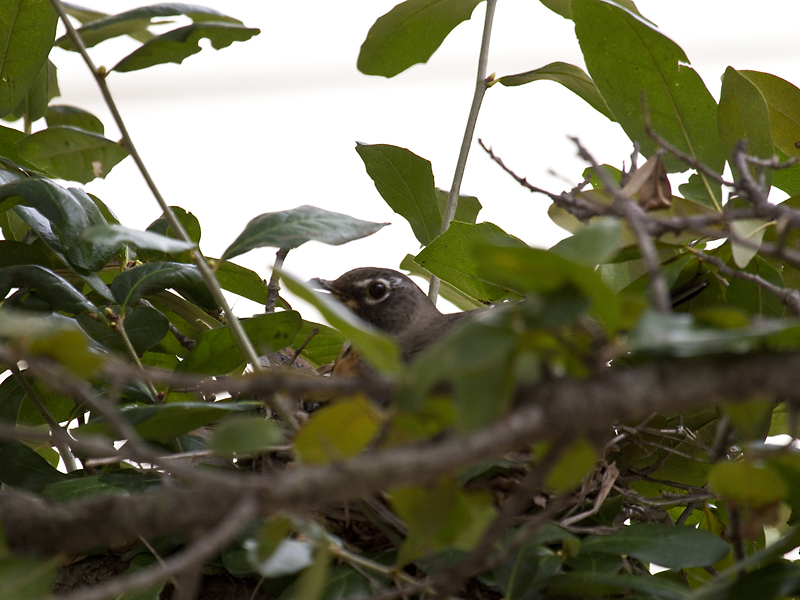
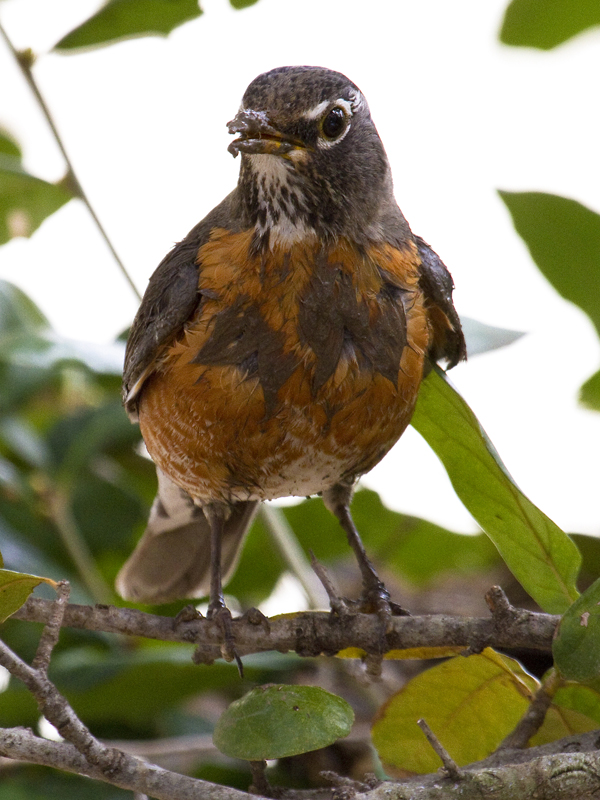
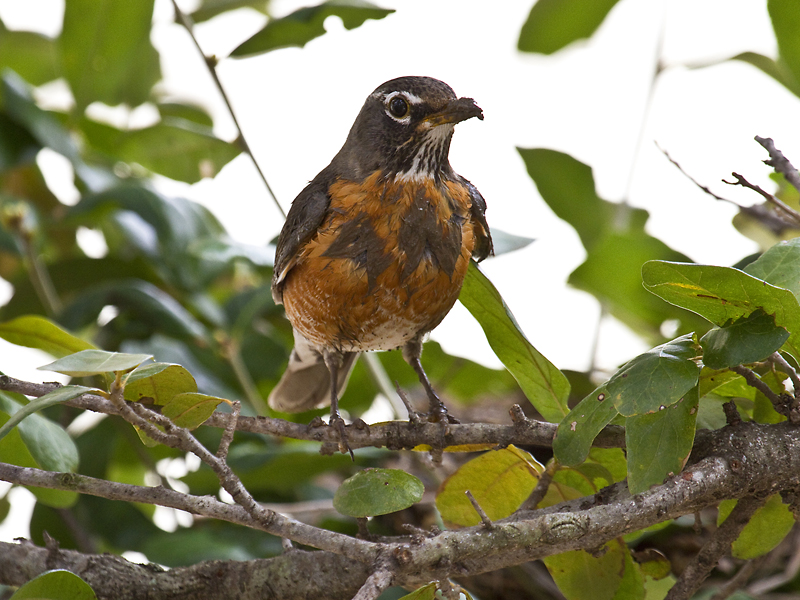
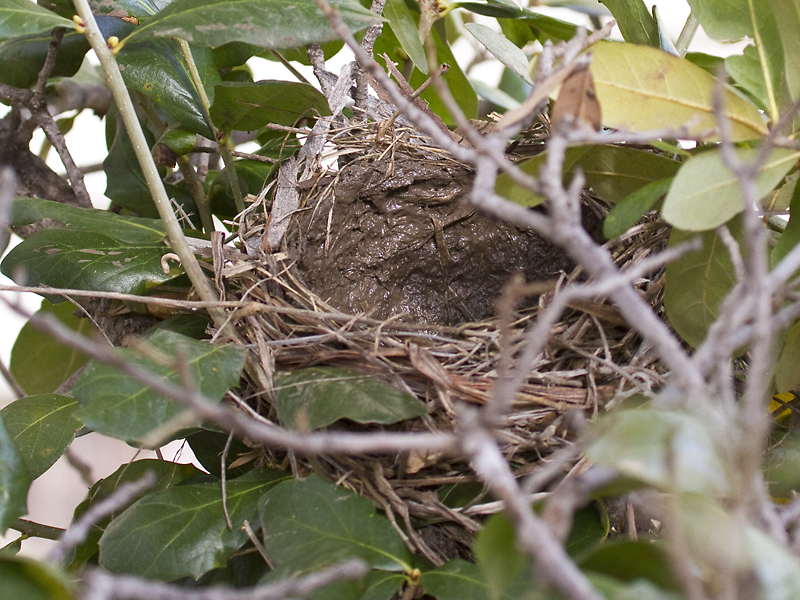
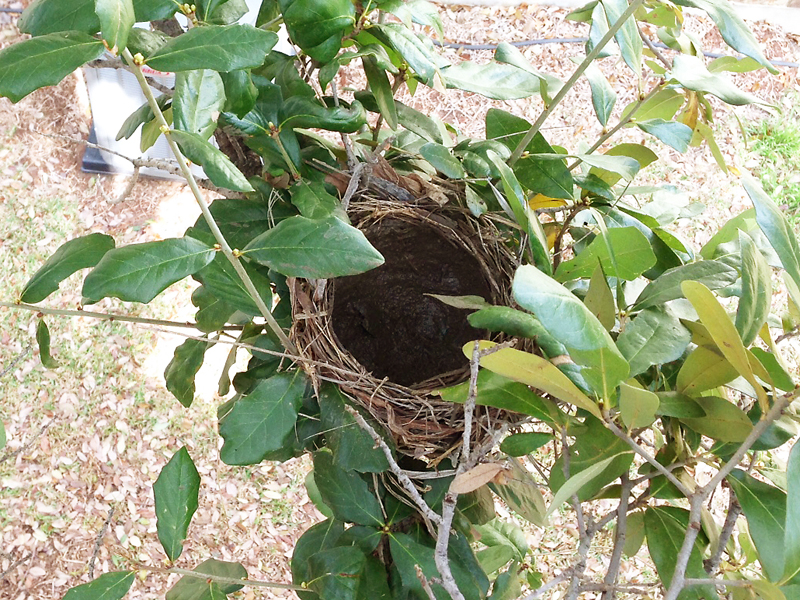
March 16, 2015
On the following day, Phil found that the busy robins had lined the inside of the nest by laying down a layer of soft, fine straw over the top of the mud they had put in place the day before.


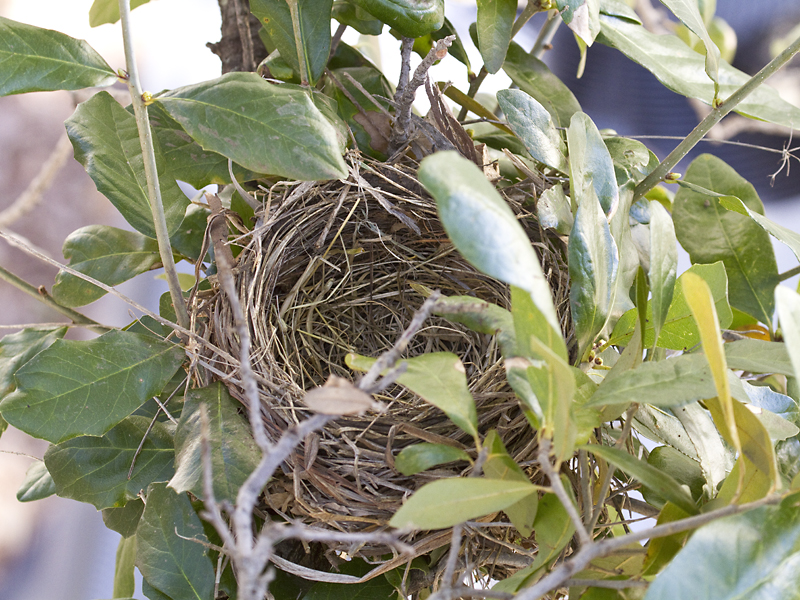

March 24, 2015
Over the next several days,Phil continued to observe an abundance of robin activity in his backyard. Vocalizations were frequent and at high volume. One time Phil watched as a robin chased a errant Blue Jay from the property. Later that day, Phil spotted the female sitting on the nest for the first time—incubation had begun.
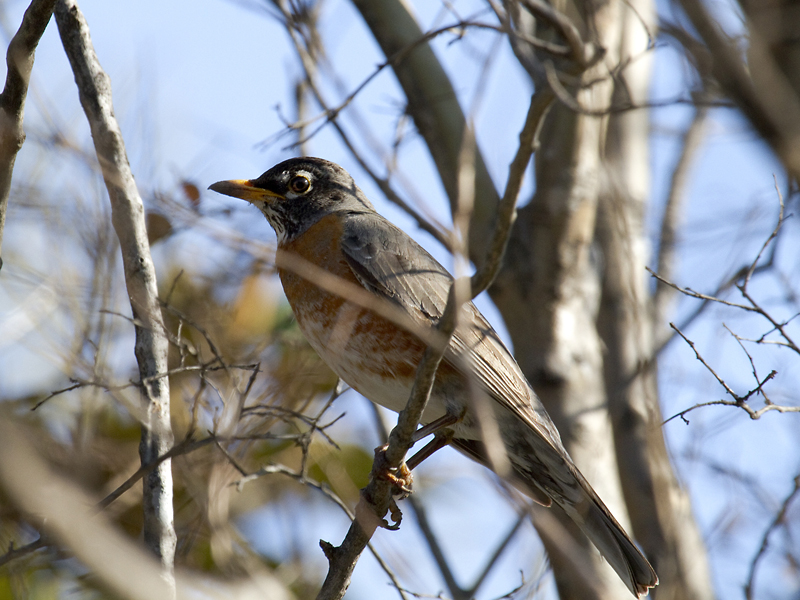
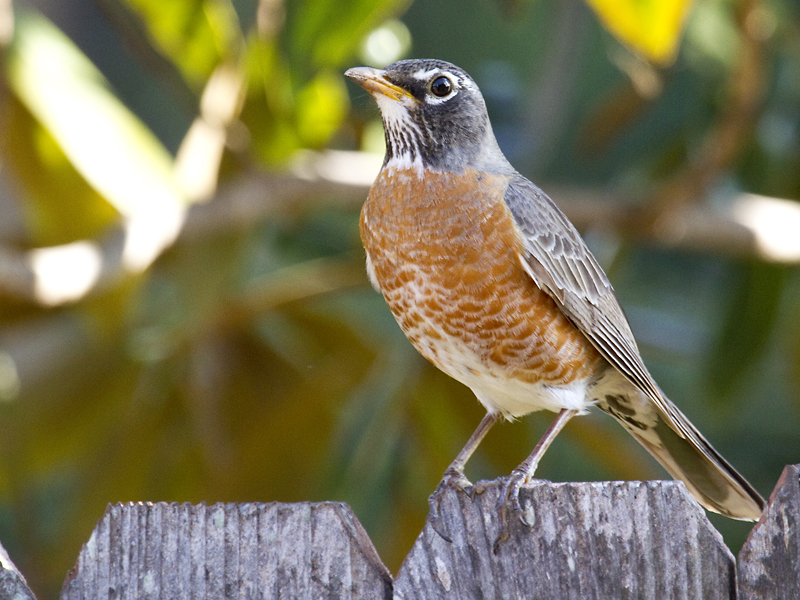
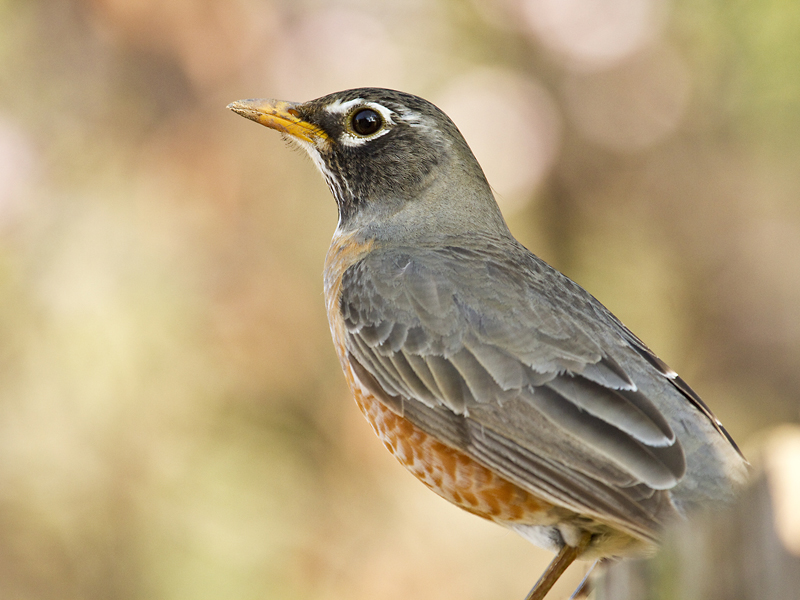
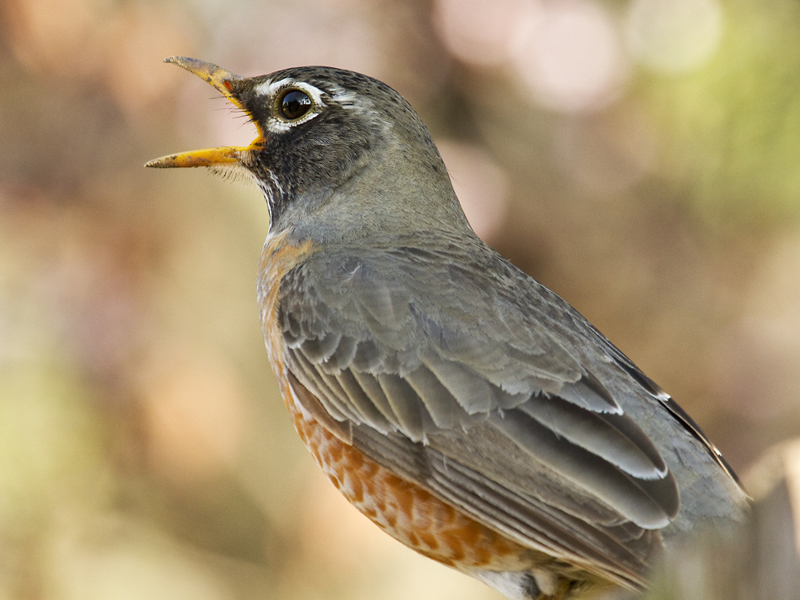

March 26, 2015
American Robins typically lay 3 to 4 eggs per each nesting attempt. They will lay one egg a day and do not begin incubating until the last one is laid. This practice ensures that all of the eggs will hatch at roughly the same time.
On Thursday, March 26 Phil again made note of the female robin on the nest incubating the eggs, but at that time there had been no opportunity to actually see inside the nest to get a count of the number of eggs present.

March 27, 2015
On Friday, Phil caught the robin off of the nest momentarily, and he took the opportunity to check the nest’s contents—three perfect turquoise American Robin eggs present and accounted for. The mother bird returned to her nest a short time later.
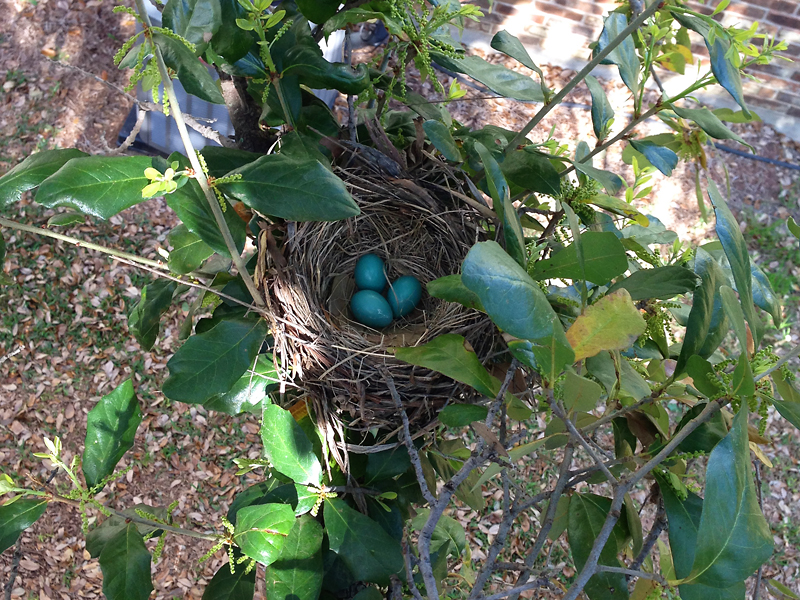
Things will move fast for these robins and their new nest. The eggs will hatch in just about two weeks, and the babies will fledge only 14 to 16 days after that. We will post a weekly update, including as many pictures as possible from the preceding seven days. Hopefully we can provide good and comprehenisve coverage of the new robin family as the babies hatch, grow, and leave the nest.
The outcome of a effort like this is never guaranteed. Predators or weather can cut a nesting attempt like this one unexpectedly short on occasion. But, for better or worse, we will follow it through to the end.
More next week… be sure to tune in!
NOTE: This post is part of a continuing series of observations: [ Next >> ]


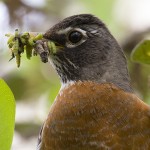
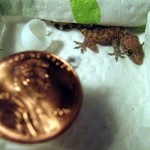


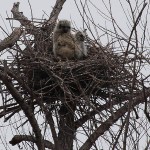
This is great. 🙂
Awesome photographs too!
Great photos, thanks !
Phil is doing a great job with this series!
-Chris